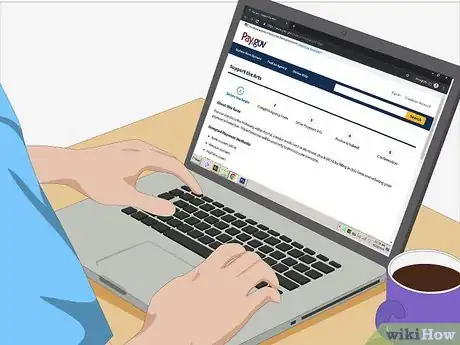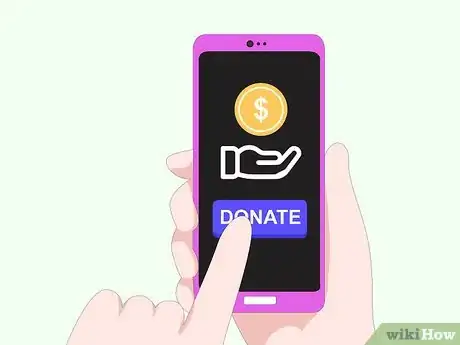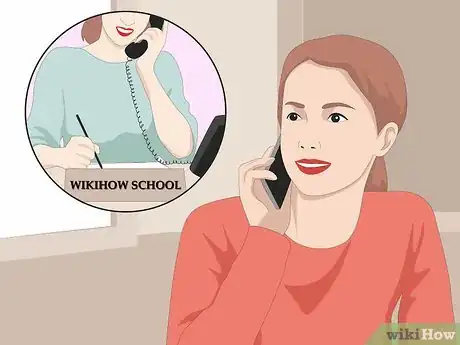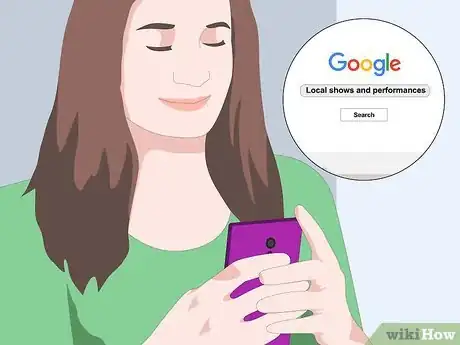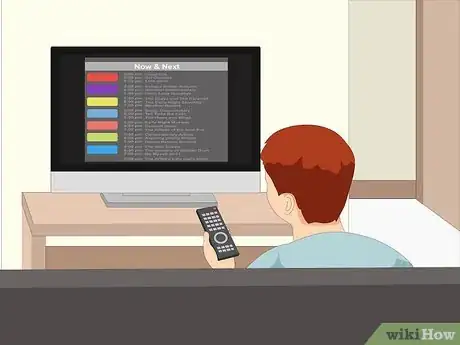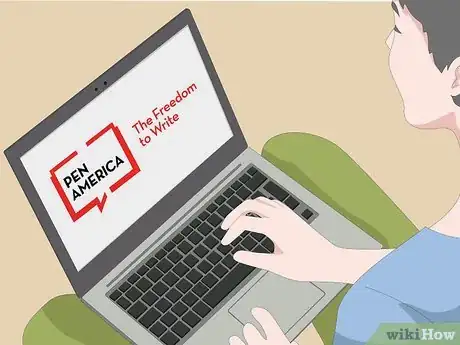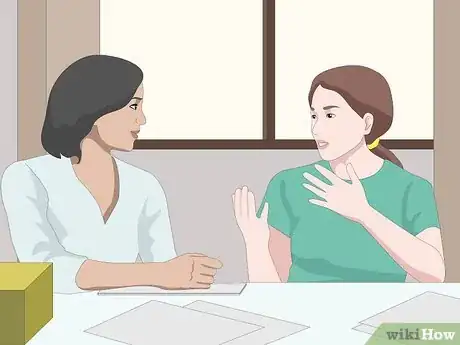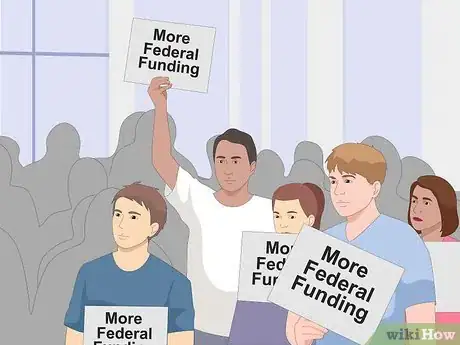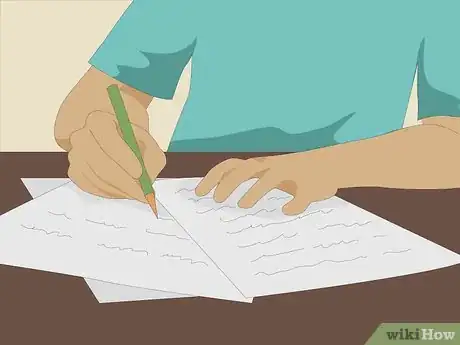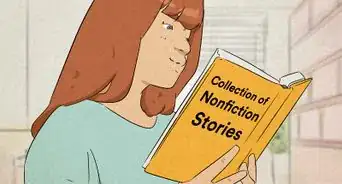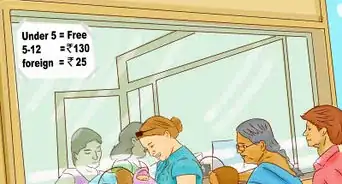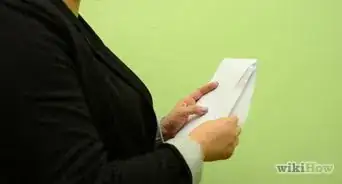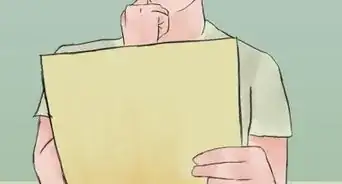This article was co-authored by wikiHow staff writer, Janice Tieperman. Janice is a professional and creative writer who has worked at wikiHow since 2019. With both a B.A. and M.A. in English from East Stroudsburg University, she has a passion for writing a wide variety of content for anyone and everyone. In her free time, you can find her working on a new crochet pattern, listening to true crime podcasts, or tackling a new creative writing project.
There are 20 references cited in this article, which can be found at the bottom of the page.
This article has been viewed 85,597 times.
Learn more...
The arts allow people to publicly express themselves in fun, creative, and meaningful ways. Art, music, and theatre all provide countless creators, musicians, and entertainers with a livelihood. Without public support and proper funding, though, these mediums may begin fading from local communities. You can help support the arts by providing financial assistance, attending community functions, and petitioning officials from your school and government.
Steps
Providing Financial Support
-
1Donate money to national arts organizations to help on a big scale. Creative projects need funding to support the cost of various supplies, tools, instruments, and other production expenses.[1] If you want to provide support on a broader level, consider donating to a national organization that supports the arts, such as the District of Columbia Commission on Arts and Humanities or the National Assembly of State Arts Agencies.[2] Check an organization’s website to see how you can donate, or give money electronically through a federal site here: https://www.pay.gov/public/form/start/973840.
- Donating any amount can help a federal arts organization, even if it doesn’t seem like it. If you’re pressed for cash, consider giving what you can, even if it's just $5 or $10. [3] You can also show your support by attending events in your community that involve the arts, like community theatre productions and art shows.
- When you financially support the arts, you are also helping make the economy stronger. In the United States, the nonprofit arts industry generates over $150 billion per year.[4]
-
2Sponsor a content creator to help them get noticed. Give money on a regular basis to support specific artists, musicians, and other creative individuals. Talent can only get a person so far, but funding and recognition can help content creators to make a living.[5] Sites like Patreon and IndieSponsor allow you to financially support artists from all over the world by providing a monthly donation.
- Sponsorships are less like donations and more like an investment into the arts.[6]
Advertisement -
3Pledge money to local art centers and theatres. Conduct a search online to see if there are any community theatres or local art centers near your location. Even if you can’t attend the shows or productions on a regular basis, you can usually donate online. Pledging money locally allows you to see your donation in action, which isn’t as feasible when you donate to a national organization.
- Many community groups let you sign up for an email newsletter. This can keep you up-to-date on what events are taking place near you.
-
4Give money to local street musicians and artists. Donate to a street performer or artist to help support them financially. If you don’t have cash on your person, ask to see if you can support them via digital apps like PayPal or Venmo. Some performers may also have devices that let you tip via credit/debit card.[7]
-
5Purchase merchandise from artists. Buy paintings, tickets, and other goods that directly fund an artist or content creator. When you purchase something from an artist, you can physically see where your money is going. If you’re not interested in sponsorships, investing your time and money into buying physical items and performance tickets can help to support the arts.[8]
- If you visit an art gallery or concert hall, be sure to leave a positive review online. This encourages other people to come out and visit these venues.[9]
Attending Community Functions
-
1Inquire with local schools to see their performance schedules. Go online or call the office of your nearest middle or high school to see when the next band concert, art show, or choir performance is. While going to local events may not provide financial support for the arts, it demonstrates a sense of solidarity and support for young performers.[10]
- Many people feel that the arts help connect communities.
-
2Check online to find local shows and performances. Use a search engine to see what musicals, plays, concerts, or art shows are being hosted at community centers and local theatres near you. Attending different functions makes the performers feel appreciated and supported, and may encourage these artists, musicians, and actors to continue pursuing their passions.[11]
- Passion for the arts isn’t limited to creative and performing careers. Future Nobel Laureates in the science field are far more likely to be passionate and involved in the arts.[12]
-
3Support live performances at restaurants and cafes. Check in with a manager or staff member at your favorite local eatery to see if their business will be hosting any live performances. Live shows help musicians get more recognition.[13]
- Just as employee recognition causes workers to have a more positive and hardworking attitude on the job, audience support and recognition helps encourage performers to keep pursuing their passions.[14]
-
4Check your TV guide for local arts programming. Check on your TV’s digital channel guide or on the website of your TV provider to see if your cable subscription offers community programming. Local television helps spread awareness of local musicians, artists, and performers, which can increase public support of community arts performances.[15]
- While local television can be a grab bag of content, there’s a chance that you can support the arts by watching local concerts and other performances from the comfort of your home.
Petitioning School and Government Officials
-
1Sign a petition to demand government funding for the arts. Check online to find petitions requesting more federal funding for national arts programs. Some government websites provide an online petition space where signatures can be collected digitally. Other websites, like PEN America, can help direct you to these petitions.[16]
- The petition portion of the United Kingdom’s Parliament website has hosted petitions related to the arts.[17]
-
2Propose more funding for the arts in your school at a board meeting. Go to the website of your school district to find out where and when the school board meets. While not part of the federal government, the school board does make decisions that affect where funding goes within the local school system, such as the music and art programs. If the school board wants to give more funding to another group, like the athletic department of a school, they might take funding away from an art, music, or theater program.[18] Work with the leader of a Parent-Teacher organization to schedule a meeting with a school board member.[19]
- Be patient when you go to schedule a meeting. Depending on the size of your school district, it may take some time before you can get in touch with someone.
-
3Protest in public to ask for more federal funding. Join up with other like-minded individuals to protest a lack of support for the arts in a public area. Try to center this protest around an upcoming legislation or a physical event, like the demolition of an art gallery. Protesting in a public place helps to generate interest for your cause.[20]
- Make sure to be respectful throughout a public protest. Many successful protests have created change through their peacefulness.[21]
-
4Write a letter to a legislator to lobby for their vote. Draft a letter explaining why you think the government should support the arts, and why you think this legislator should vote in favor of federal funding for the arts. While petitions and protests demonstrate public interest in the arts, individual letters show dedication and commitment to a cause. Research online to see which members of government will be voting on funding for the arts, and direct your letter to one of those individuals. Explain how the arts have positively impacted your life, and why funding is important.[22]
- Be sure to include your return address on the letter, so the government official can potentially write you back.
- You can write to some members of government via email. You can find their contact information here: https://www.usa.gov/elected-officials.
- Consider calling a legislator on the phone to speak with them directly. This may be more efficient than sending a letter through the mail.[23]
References
- ↑ https://www.monmouth.edu/mca/support/
- ↑ https://www.arts.gov/partners/state-regional
- ↑ https://www.charities.org/news/blog/donating-how-much-enough-make-difference
- ↑ https://blog.americansforthearts.org/2019/05/15/10-reasons-to-support-the-arts-in-2019
- ↑ https://www.artshub.co.uk/news-article/features/grants-and-funding/diana-carroll/what-sponsors-want-from-the-arts-255672
- ↑ https://www.artshub.co.uk/news-article/features/grants-and-funding/diana-carroll/what-sponsors-want-from-the-arts-255672
- ↑ https://www.wsj.com/articles/donate-to-a-street-musician-there-are-apps-for-that-1509938040
- ↑ https://www.lightspacetime.art/10-ways-that-we-can-support-the-arts-and-artists/
- ↑ https://www.inc.com/andrew-thomas/the-hidden-ratio-that-could-make-or-break-your-company.html
- ↑ https://blog.americansforthearts.org/2019/05/15/10-reasons-to-support-the-arts-in-2019
- ↑ https://medium.com/@MxHunterMass/support-your-local-high-school-theatre-c5a4d7c21c8
- ↑ https://blog.americansforthearts.org/2019/05/15/10-reasons-to-support-the-arts-in-2019
- ↑ http://www.rocknsoulcafe.com/the-benefits-of-live-music-in-restaurants-and-coffee-shops/
- ↑ https://www.inc.com/will-yakowicz/the-importance-of-giving-recognition.html
- ↑ https://www.bctv.org/program/4-your-entertainment/
- ↑ https://pen.org/arts-funding/
- ↑ https://petition.parliament.uk/petitions/257090
- ↑ https://www.nemc.com/resources/articles/music-education-in-crisis_90
- ↑ https://www.greatschools.org/gk/articles/taking-it-to-the-school-board/
- ↑ https://www.statepress.com/article/2015/02/photos-roosevelt-row-protesters-stage-funeral-march-to-support-greenhaus-arts-community
- ↑ https://www.globalcitizen.org/en/content/peace-protests-dallas-response/
- ↑ https://www.ucsusa.org/action/writing-letters.html
- ↑ https://www.ucsusa.org/action/phone-calls.html
